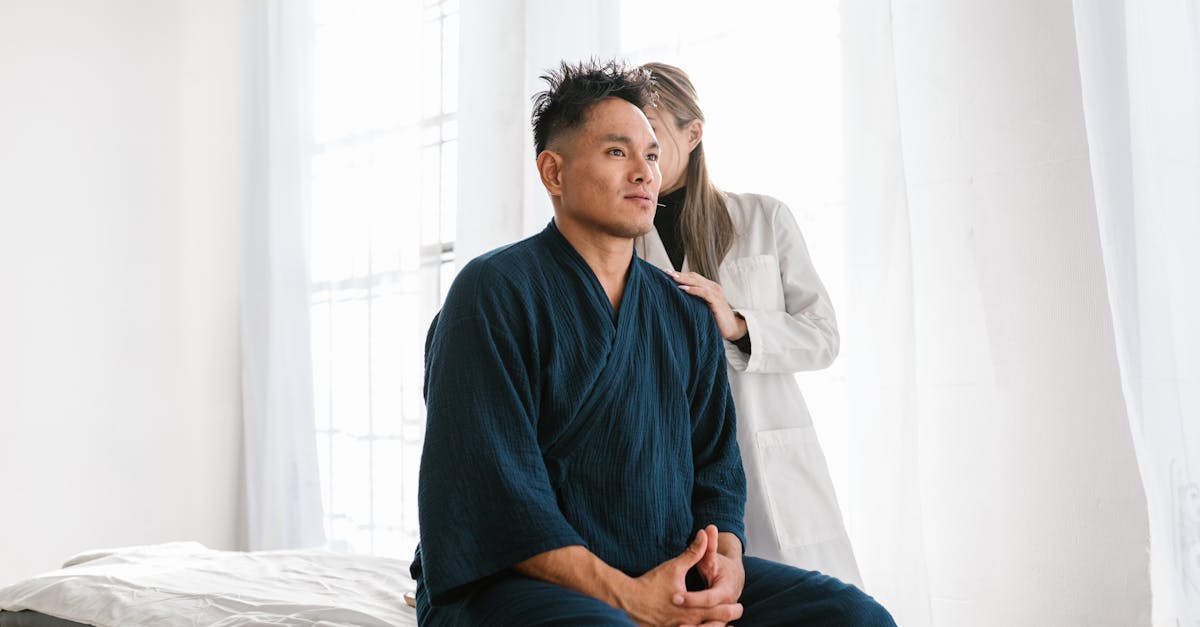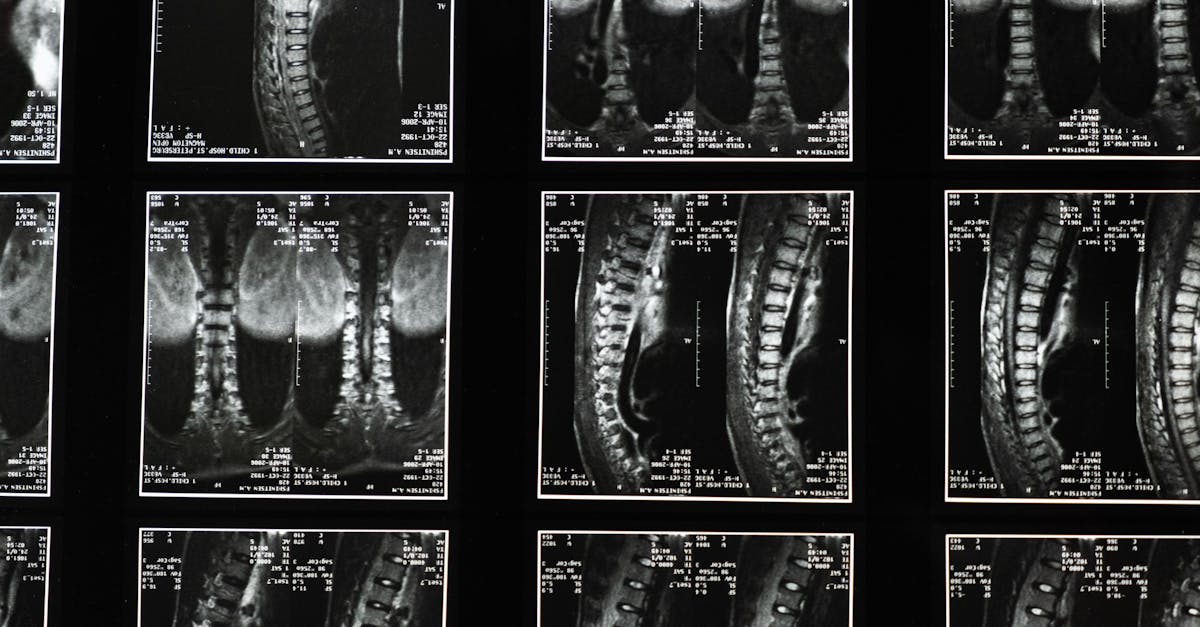In Short Waking up with neck pain is a common issue that often arises from poor sleep posture or pre-existing medical conditions. Understanding the causes can lead to effective strategies for relief and prevention. Addressing this issue can enhance your quality of life, allowing you to reclaim your freedom of movement. Key benefits include increased comfort, improved mobility, and reduced muscle strain. By adopting a few practical measures, you can significantly mitigate discomfort and promote better sleep health. |
Waking up with neck pain is a common issue that can significantly impede daily activities. Several factors can contribute to this discomfort, primarily related to sleeping positions and improper pillow use. Using a pillow that is too high or too stiff can lead to the neck being flexed overnight, resulting in stiffness and pain upon waking. Additionally, underlying medical conditions such as osteoarthritis or prior injuries like whiplash may exacerbate the situation. To mitigate these issues, individuals can adopt strategies such as gentle stretches, warm compresses, and seeking medical advice for persistent pain. Understanding the causes and implementing these solutions can greatly improve overall well-being.
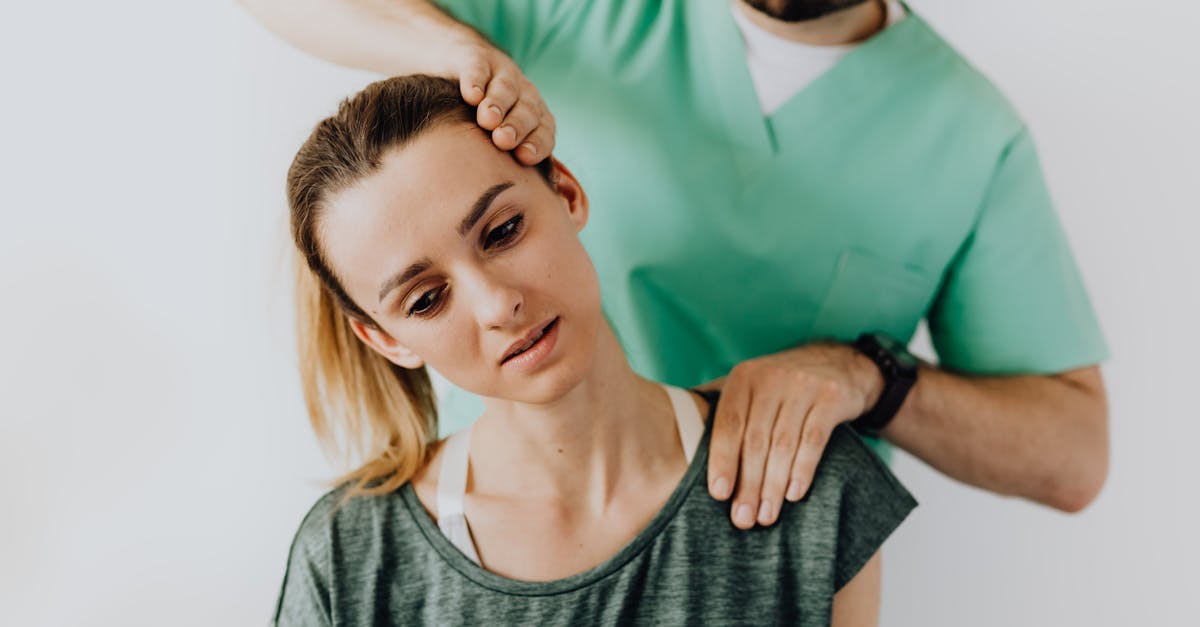
Welcome to Pulse Align: Your Path to Enhanced Well-Being
At Pulse Align, we believe that achieving a better balance and posture should be a gentle journey, accessible to everyone. Our innovative approach uses subtle pulses to assist your body in recalibrating its natural alignment and balance, promoting a state of relaxation and comfort. This method allows clients to experience a soothing, non-invasive way to address any discomfort or tension they may feel, particularly upon waking. Explore how we can support your journey to improved muscle tone and well-being.
Rediscover Your Body’s Potential
The focus of Pulse Align is not on diagnosing or treating specific conditions, but rather enhancing your body’s natural ability to restore equilibrium and improve overall posture. Our gentle method encourages your body to naturally recalibrate, often leading to greater comfort and mobility. By fostering an environment of balance, clients frequently report a sense of ease and freedom in their movements, helping to mitigate any underlying tension that may arise from everyday activities.
Personalized Care for Every Client
We take pride in our personalized approach to wellness at Pulse Align. Many clients have shared their stories of notable improvements in their muscle tension and overall posture. Feedback praises our supportive environment, which caters to the needs of the entire family, including children and pregnant women. This makes Pulse Align a perfect addition to your family’s holistic wellness routine. Our approach not only enhances muscle tone symmetry but supports a healthier lifestyle overall.
Join Us on Your Wellness Journey
Learn more about how Pulse Align can facilitate your path to improved well-being by visiting our website. We invite you to explore nearby clinics, including locations in La Prairie, Mont-Royal, and Terrebonne. Book a consultation online, knowing that our safe and family-friendly approach complements your ongoing wellness efforts without replacing your existing healthcare services. Experience the Pulsating Harmony of wellness with Pulse Align.
Medical Disclaimer
The services offered by Pulse Align are designed to complement, not replace, any medical care. Clients are encouraged to work alongside their healthcare team for any medical concerns they may have. Any reported symptom relief is attributed to the body’s innate ability to restore balance, and not to direct interventions from Pulse Align.
- Causes:
- Poor sleep posture
- High or stiff pillows
- Previous injuries
- Conditions like osteoarthritis
- Muscle strain from awkward positions
- Solutions:
- Use ergonomic pillows
- Incorporate gentle stretches
- Apply warm compresses
- Adjust sleeping positions
- Consult a healthcare professional if pain persists
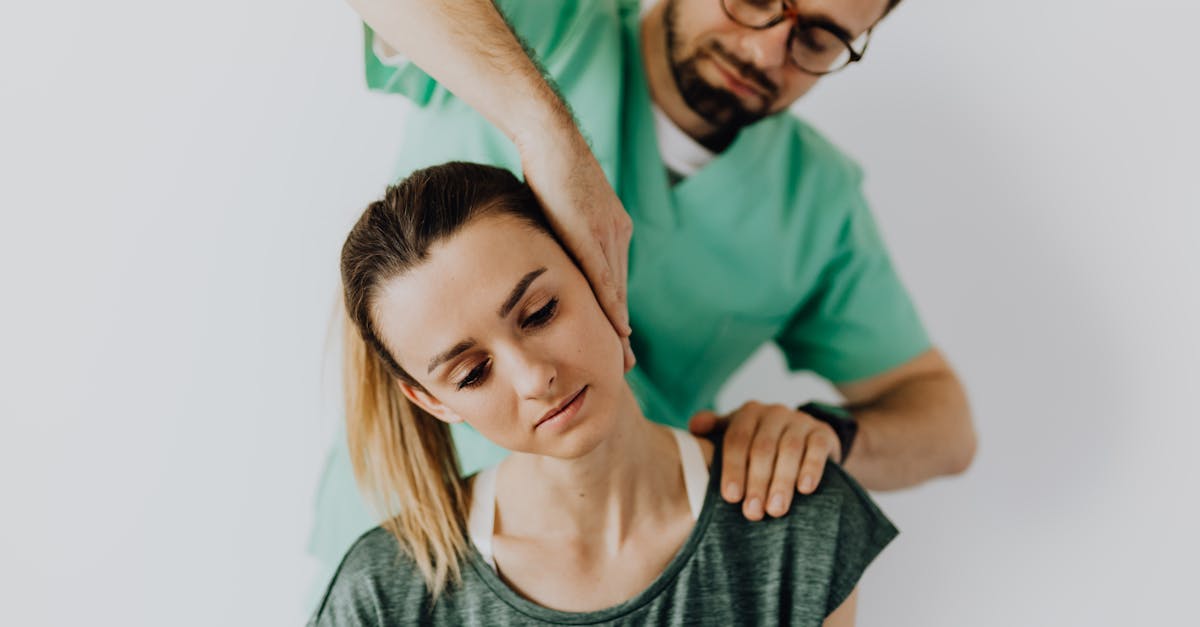
Understanding Neck Pain Upon Waking Up
Experiencing neck pain upon waking is a common issue that many individuals face, often manifesting as stiffness or discomfort that hampers movement. The reasons behind this pain can range from poor sleep posture to underlying medical conditions such as osteoarthritis. Identifying the causes and implementing effective strategies for relief can significantly improve one’s quality of life and overall well-being.
Common Causes of Neck Pain After Sleeping
Poor Sleep Posture
A predominant cause of waking up with neck pain is poor sleep posture. Sleeping in a position that keeps the neck flexed for prolonged periods can lead to muscle strain and stiffness. Often, individuals may not realize the impact of their pillow height or sleeping position until they consistently experience discomfort.
Inadequate Pillows
The type of pillow used during sleep can play a pivotal role in neck pain. A pillow that is too high or too stiff can maintain the neck in an unnatural position. Conversely, a pillow that is too low may not provide adequate support. It is essential to find a pillow that maintains the natural curve of the spine and supports a comfortable angle of the neck.
Underlying Medical Conditions
Medical conditions, such as osteoarthritis and nerve compression, may also contribute to morning neck pain. Degenerative changes in the cervical spine can lead to chronic discomfort. For those with a history of prior injuries, such as whiplash, the risk of waking up with neck pain may be heightened due to previous trauma affecting the soft tissues and surrounding structures.
Prevention and Treatment Strategies
Improving Sleep Posture
Adopting a better sleep posture can significantly reduce neck pain. Consider sleeping on your back or side while using a pillow that supports the natural alignment of your spine. Additionally, it may help to switch sides regularly if you are a side sleeper to avoid asymmetrical tension on the neck.
Gentle Stretching and Exercises
Incorporating gentle stretching and neck exercises into your daily routine can alleviate tension and build strength in the neck muscles. Simple neck rolls, side stretches, and chin tucks can be effective in promoting flexibility and restoring mobility.
Heat and Cold Therapy
Utilizing heat and cold therapy can also provide relief for neck pain. Warm compresses can help relax tight muscles, while cold packs can reduce inflammation. Alternating between both can yield beneficial effects, depending on the symptoms present.
When to Seek Professional Help
Identifying Chronic Issues
If neck pain persists despite implementing these strategies, it may be advisable to consult a healthcare professional. Chronic neck pain can indicate underlying issues that require specialized intervention, such as physical therapy or further medical evaluation.
Embracing a Holistic Health Approach
Embracing a holistic approach to health aligns with the principles of Pulse Align and fosters neuromuscular health, symmetry, and recalibration of the nervous system. Incorporating regular physical activity, maintaining proper posture during the day, and managing stress levels can significantly enhance muscle recovery and neck health.
| Cause | Solution |
| Poor sleeping position | Adjust pillow height, ensure neck alignment |
| Muscle strain | Gentle stretching and warm compresses |
| Osteoarthritis | Consult healthcare provider for treatments |
| Previous injuries | Physical therapy and targeted exercises |
| Nerve compression | Seek medical advice for proper diagnosis |
| Stress and tension | Incorporate relaxation techniques and yoga |
| Vitamin D deficiency | Consider supplements and sunlight exposure |
| Improper ergonomics | Adjust workspace to promote better posture |
| Dehydration | Increase water intake throughout the day |
| Lack of sleep | Establish a consistent sleep routine |

Clients’ Transformative Wellness Journey
In La Prairie, clients have shared their remarkable experiences with Pulse Align, emphasizing how the unique approach helps them address neck pain upon waking up. Many have discovered that through holistic recovery, their bodies can naturally recalibrate and restore balance, leading to a significant reduction in discomfort.
One client from Mont-Royal remarked, “After suffering from chronic neck pain for years, I finally found relief with Pulse Align. The gentle guidance and focus on my body’s natural healing process have changed my mornings completely. I wake up feeling refreshed and free from pain.” This testimony underscores the efficacy of an approach that prioritizes the body’s innate ability to heal itself.
Residents of Terrebonne have consistently reported feeling improvements in their overall wellness. One individual stated, “I was skeptical at first, but after a few sessions, my morning stiffness has decreased dramatically. It feels wonderful to experience natural healing at its best.” This aligns perfectly with Pulse Align’s mission to support clients in their pursuit of restored health and well-being.
In Chicoutimi, another client shared, “Not only did I learn about the importance of proper posture and sleeping habits, but I also gained tools to manage my neck pain effectively. The focus on holistic recovery made a world of difference.” Such feedback reflects how Pulse Align collaborates with individuals to align their health with their lifestyle.
In Châteauguay, community members have applauded the support they received from the dedicated team at Pulse Align. A satisfied client noted, “It’s amazing to work with professionals who truly understand and support my wellness journey. I feel like I’ve reclaimed my life without the burden of persistent neck pain.” These personal stories reinforce the value of an integrative approach that complements traditional methods alongside healthcare teams.
Clients situated in Saint-Jérôme and Deux-Montagnes have also found Pulse Align’s services beneficial. “The treatments I received there not only helped with my neck pain but enhanced my overall physical function,” said a regular. This points to the broader impact of their cutting-edge techniques in promoting holistic health.
As more individuals discover the advantages of working with Pulse Align, it is clear that those in areas like Sainte-Marie and Les Escoumins are also encouraged to explore this opportunity for recovery. The positive experiences echo throughout the community, emphasizing the undeniable impact of an approach that is both comprehensive and compassionate.
For more information, please visit Our Clinics and learn how Pulse Align is committed to supporting your wellness journey, alongside healthcare teams, to best serve clients and their families.
Waking up with neck pain is an experience many individuals face, causing distress and an inability to start the day positively. Understanding the causes behind this discomfort is crucial in finding effective solutions. One prevalent reason for morning neck pain is poor sleep posture. When individuals sleep in awkward positions—often with their neck overly flexed or extended due to the height or rigidity of their pillows—it creates undue strain on the muscles and ligaments, leading to stiffness and soreness upon waking.
Another factor contributing to neck pain upon waking can be attributed to previous injuries. For instance, whiplash injuries sustained in accidents can result in lingering discomfort. Additionally, chronic conditions such as osteoarthritis or degenerative disc diseases further complicate the matter, as they can lead to stiffness and inflammation in the cervical spine. Hence, it’s vital for individuals experiencing recurrent pain to consider their medical history to understand potential underlying contributors.
Stress can also play a significant role in exacerbating neck pain. The body’s natural response to stress often leads to tension in the neck and shoulder areas, causing muscle tightness. Poor posture during daily activities, such as extended computer use or smartphone engagement, can further add to this issue. Over time, these factors contribute to a cycle of muscle tension and pain that can worsen overnight.
To combat morning neck pain, several strategies can be employed. First and foremost, evaluating and adjusting sleep habits is essential. For instance, opting for a medium-firm pillow that supports the natural alignment of the head and neck can make a world of difference. Those who prefer sleeping on their back might find memory foam pillows beneficial, while side sleepers may require a thicker option to fill the space between their neck and shoulder.
In addition to adjusting pillows, incorporating gentle stretches and exercises into daily routines can enhance overall neck health. Stretching the neck muscles, particularly before bedtime, can alleviate tension and improve flexibility. Furthermore, physical therapists recommend specific exercises that target strength and alignment, focusing on the neck and upper back muscles.
Seeking professional help also proves beneficial for those struggling with chronic neck pain. Specialists like Dr. Sylvain Desforges, an expert in osteopathy, naturopathy, and manual medicine, advocate for comprehensive assessments to identify root causes of pain. As the founding president of TAGMED clinics and the ACMA association, Dr. Desforges is dedicated to healthcare innovation, specializing in chronic pain management. His approach emphasizes the use of advanced technologies, such as spinal decompression, laser, and shockwave therapy, to provide evidence-based care that optimizes patient health and well-being.
Overall, addressing neck pain upon waking requires a multifaceted approach that includes examining sleep posture, managing stress, and employing professional assistance when necessary. By implementing these strategies, individuals can reclaim their mornings and enhance their overall quality of life, instead of dreading the constant return of morning pain.
How TAGMED’s Neurovertebral Decompression Technology Can Help Chronic Pain Patients
Mecanism of Action
Neurovertebral decompression technology from TAGMED operates by applying controlled, progressive traction force to the spine. This technique aims to increase the space between vertebrae, effectively alleviating pressure on intervertebral discs and nerve roots. By doing so, this approach enhances the circulation of fluids in the targeted area, which is crucial for reducing inflammation and relieving pain. As the decompression occurs, the negative pressure created within the discs draws in essential nutrients and promotes its regeneration, further contributing to pain alleviation.
Specific Advantages
This non-invasive method offers effective relief for chronic pain and symptoms related to conditions such as herniated discs, bulging discs, and moderate to severe spinal or foraminal stenosis. By reducing the pressure on nerve structures and optimizing fluid circulation around the discs, neurovertebral decompression fosters quicker recovery. Patients often experience an improved quality of life, with many reporting increased mobility, less discomfort, and a significant reduction in their reliance on medications.
Comparison with Other Treatments
When contrasted with traditional treatment methods for managing neck pain, such as painkillers, corticosteroid injections, surgery, or conventional physiotherapy, TAGMED’s neurovertebral decompression displays unique advantages. Unlike invasive surgical options, this technology carries minimal risks and does not involve pharmacological interventions that may lead to side effects or dependency. Many patients can experience a quicker recovery time while achieving substantial pain relief, making it a compelling choice among other therapeutic approaches.
Case Studies and Testimonials
Numerous patients have successfully undergone TAGMED’s neurovertebral decompression to manage their chronic pain symptoms. Testimonials reveal remarkable outcomes, including lasting reductions in pain, faster returns to daily activities, and a decreased reliance on medication. For instance, a patient suffering from chronic neck pain reported a marked decrease in discomfort after several sessions, allowing them to re-engage in physical activities they had previously avoided. Such feedback highlights the effectiveness and transformative potential of this innovative approach.
Waking up with neck pain can be a frustrating and debilitating experience that interferes with daily activities and overall quality of life. Understanding the causes of this discomfort is crucial for finding effective solutions. Common culprits often include improper sleep positions, inadequate or poorly designed mattresses and pillows, and even underlying medical conditions such as osteoarthritis or nerve compression. Recognizing that these factors play a significant role can empower individuals to take proactive measures to mitigate pain.
To address neck pain upon waking, a multifaceted approach can be beneficial. Firstly, assessing and adjusting your sleeping posture is essential. Utilizing a pillow that supports the natural curve of your neck can help improve alignment and reduce strain. Additionally, engaging in gentle neck stretches before bed or upon waking can promote circulation and help alleviate stiffness. It may also be wise to consider your overall sleep environment, ensuring that your mattress provides adequate support without being excessively firm or soft.
For those whose neck pain persists, consulting with a healthcare professional is advisable. Physical therapists can provide tailored exercise programs and manual therapy techniques designed specifically to address neck discomfort. Neuromodulation techniques may also offer relief for chronic neck pain, targeting the nervous system’s response to pain and restoring function.
Lastly, maintaining an awareness of lifestyle factors is key. Practices such as regular physical activity, stress management, and ergonomic adjustments during activities like working on a computer can contribute significantly to long-term neck health. By addressing both immediate symptoms and underlying issues, individuals can reclaim their mornings free from the burden of neck pain.
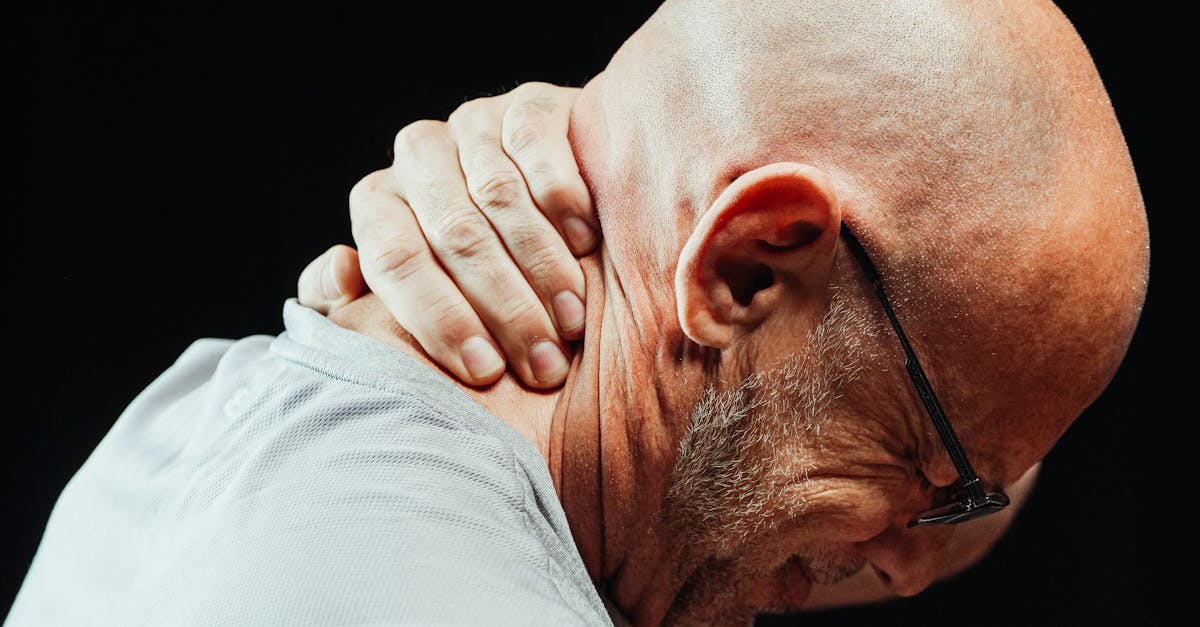
Do you suffer from discomfort that responds little or not at all to conservative treatments?
Pulse Align introduces an innovative, non-invasive method designed to help restore the body’s natural balance and improve posture through gentle, imperceptible pulses. This unique approach can lead to reduced muscle tension and discomfort, allowing clients to rediscover a sense of well-being and enhanced mobility. At Pulse Align, we believe that supporting the body’s natural recalibration process can create a pathway to a healthier, more comfortable lifestyle, devoid of direct medical interventions.
Our focus at Pulse Align is not on specific discomforts, but rather on empowering the body to recalibrate itself naturally. Through our gentle stimulation techniques, we encourage muscle tone symmetry and foster better posture, which can lead to an impressive improvement in overall comfort and function. Clients have often remarked on the noticeable shifts in their alignment and posture, contributing to enhanced quality of life without the need for invasive procedures or treatments.
We take a personalized approach to every client’s experience at Pulse Align. Our testimonials reflect the remarkable improvements many have noticed regarding their posture, tension in the neck and back, and overall wellness. This encouraging feedback highlights our holistic method of supporting natural balance, allowing individuals to explore a new level of comfort and ease in their daily activities. By integrating our services into their wellness journey, clients can experience profound benefits tailored to their specific needs.
We invite you to visit the Pulse Align website to learn more about our services and to find nearby locations in cities such as La Prairie, Mont-Royal, and Terrebonne, where you can book a consultation for yourself or your family. Remember, Pulse Align is here to complement your healthcare journey; we encourage you to maintain your ongoing relationship with your healthcare providers while exploring the advantages of our non-invasive methods. Pulse Align stands as a supportive partner on your path to well-being.
To discover how Pulse Align’s safe, non-invasive, and family-friendly approach can positively impact your wellness journey, we urge you to book an appointment online today. Experience for yourself the transformative power of our gentle techniques. Visit our website at Pulse Align to find out more and to schedule your consultation.
Frequently Asked Questions
Neck Pain
- What is cervical pain?It’s pain localized in the neck area, which can radiate to the head, shoulders, or upper back.
- Can I do stretching exercises at work?Yes, taking breaks, gently rotating your neck and shoulders can reduce accumulated tension.
- Does a cervical herniated disc always cause pain?Not always, but it can cause pain, numbness, tingling, and weakness in the arms when it compresses a nerve root.
- Are heated cervical collars useful?Yes, they combine support and warmth, providing temporary relief.
- Should I avoid thick pillows?Yes, a pillow that’s too thick or too thin alters neck alignment, potentially causing or worsening pain.
- Can I prevent neck pain?Yes, by maintaining good posture, strengthening neck muscles, reducing stress, and adjusting workplace ergonomics.
- Is phone usage a factor?Yes, looking down at your phone for long periods (Text Neck) increases pressure on cervical vertebrae.
- Can poorly adjusted eyeglasses cause neck pain?Yes, tilting your head to see properly can add strain to the neck.
- How can I quickly relieve neck pain?Gentle stretches, applying heat, light massages, improving posture, and relaxation exercises can provide temporary relief.
- Does being overweight play a role?Excess weight may increase spinal load, but its impact on the cervical area is less direct than on the lumbar region.
David Lambert understands that neck pain is far more than a physical ache—it’s a roadblock to living the life you love. As a Neck Pain Awareness Advocate at Pulse Align, he is committed to shedding light on the underlying causes, sharing practical relief strategies, and offering genuine support to readers seeking to reclaim their freedom of movement. With a warm, empathetic voice and a keen eye for the latest in pain management research, David leads conversations that uplift, educate, and inspire. He believes that every individual deserves to feel heard, understood, and guided toward healing, one step at a time.
Medical Disclaimer
The information and advice provided on this site do not replace the advice, diagnosis, or treatment of a healthcare professional. Please note that the author of this article is neither a doctor nor a specialist in a medical specialty as defined by the Collège des médecins du Québec. Manual medicine, functional medicine, and sports medicine as described on this site exclude any medical treatment or diagnosis made by a doctor or medical specialist. Always consult your doctor for any medical questions. For more details, please read our complete Legal Notice.
References
- Engebretsen, Lars, et al. “Sports Injuries and Illnesses during the Winter Olympic Games 2010.” British Journal of Sports Medicine, vol. 44, no. 11, 2010, pp. 772–80, https://bjsm.bmj.com/content/44/11/772.short.
- Lenjani, Basri, et al. “Emergency Medical Care and Management of Sports Injuries on the Football Court.” Albanian Journal of Trauma and Emergency Surgery, vol. 5, no. 1, 2021, pp. 773–77, http://journal.astes.org.al/AJTES/index.php/AJTES/article/view/172.
- Bahr, Roald, and Sverre Mæhlum. Clinical Guide to Sports Injuries. Human Kinetics, 2004, https://books.google.com/books?hl=fr&lr=&id=mmRnr0x0p4QC&oi=fnd&pg=PA86&dq=%22sports+injuries%22+%2B+abdomen&ots=mF6T-o_I4q&sig=CtFsHciVC0aKP7AIcw-wVJdjT6k.
- Jarraya, Mohamed, et al. “Sports Injuries at the Rio de Janeiro 2016 Summer Paralympic Games: Use of Diagnostic Imaging Services.” European Radiology, vol. 31, no. 9, 2021, pp. 6768–79, https://doi.org/10.1007/s00330-021-07802-3.
- Kaynaroğlu, Volkan, and Yusuf Alper Kiliç. “Archery-Related Sports Injuries.” Sports Injuries, edited by Mahmut Nedim Doral, Springer Berlin Heidelberg, 2012, pp. 1081–86, https://doi.org/10.1007/978-3-642-15630-4_143.
- Nielsen, Jesper Möller, and Mats Hammar. “Sports Injuries and Oral Contraceptive Use: Is There a Relationship?” Sports Medicine, vol. 12, no. 3, 1991, pp. 152–60, https://doi.org/10.2165/00007256-199112030-00002.
- Seah, Pei Zhen, et al. “Risk Stratification of Paediatric Sports Injuries Seen at a Tertiary Hospital.” Ann Acad Med Singap, vol. 49, 2020, pp. 955–62, https://www.annals.edu.sg/pdf/49VolNo12Dec2020/V49N12p955.pdf.
- Jayashankar, Venati, and M. Srinivas Naik. “A Research Study on Deaths Due to Injuries to Abdomen Brought to Ananthapuram Govt. Medical College Mortuary, Andhra Pradesh from January 2010 to December 2016.” Medico-Legal Update, vol. 18, no. 2, 2018, pp. 181–84, https://www.indianjournals.com/ijor.aspx?target=ijor:mlu&volume=18&issue=2&article=040.
- Liu, Tao. “Impact of Posture and Recovery Methods on Sports Injuries.” Revista Brasileira de Medicina Do Esporte, vol. 28, no. 6, 2022, pp. 719–22, https://www.scielo.br/j/rbme/a/BRzZwhZBjXSLYCHNH3PpDSL/?lang=en.
- Guermazi, Ali, et al. “Sports Injuries at the Rio de Janeiro 2016 Summer Olympics: Use of Diagnostic Imaging Services.” Radiology, vol. 287, no. 3, 2018, pp. 922–32, https://doi.org/10.1148/radiol.2018171510.

